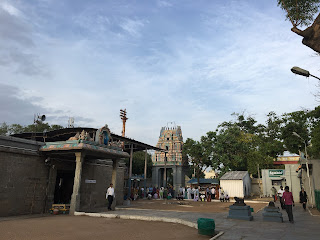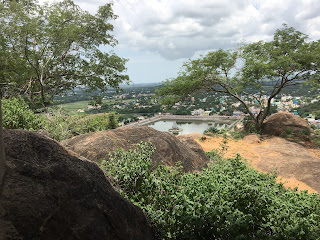People often ask me which is the oldest temple in Tamil Nadu. It is a tough question because many of the temples are extremely difficult to date precisely as the core of these temples, which are the most ancient parts, are often hidden and obscured by later rebuilding and renovation over many centuries. But there is one ancient and ruined temple very close to Chennai that was unearthed after the tsunami in 2004, which many historians and archaeologists believe is the oldest temple structure discovered so far. After the tsunami receded in 2004, it left exposed some rock inscriptions pointing to a temple nearby on the seashore at Saluvankuppam just north of the famous UNESCO world heritage site of Mahabalipuram. Very close to the Tiger Cave site of the same period as the Pallava Monuments at Mahabalipuram, the ruins of this temple were buried under the sand for many centuries. There is evidence of an old brick temple belonging to the 2nd century BCE that appears to have been destroyed possibly by an earlier tsunami. Tsunamis likely occurred many times on this coast over the millennia. A second temple appears to have been constructed on the ruins of the older temple in the 8th century which also has been destroyed in the 13th century after which it lay buried until 2004. It is believed to be a Murugan temple as there is a structure which appears to be a Vel at the front of the complex.
The site lies 52 km or 1 hour south of Chennai and 12 minutes north of Mahabalipuram off the East Coast Road. Signage and access are very poor. The best access is through the Tiger Cave complex and there is a gate at the north boundary to access the site which is visible from that point. The access is a footpath. No signs for such an important and significant monument. The site is fenced but the gate was open and it was unguarded when we visited in 2017. A major act of vandalism occurred in 2018 which almost caused irreparable damage to the site.




















































